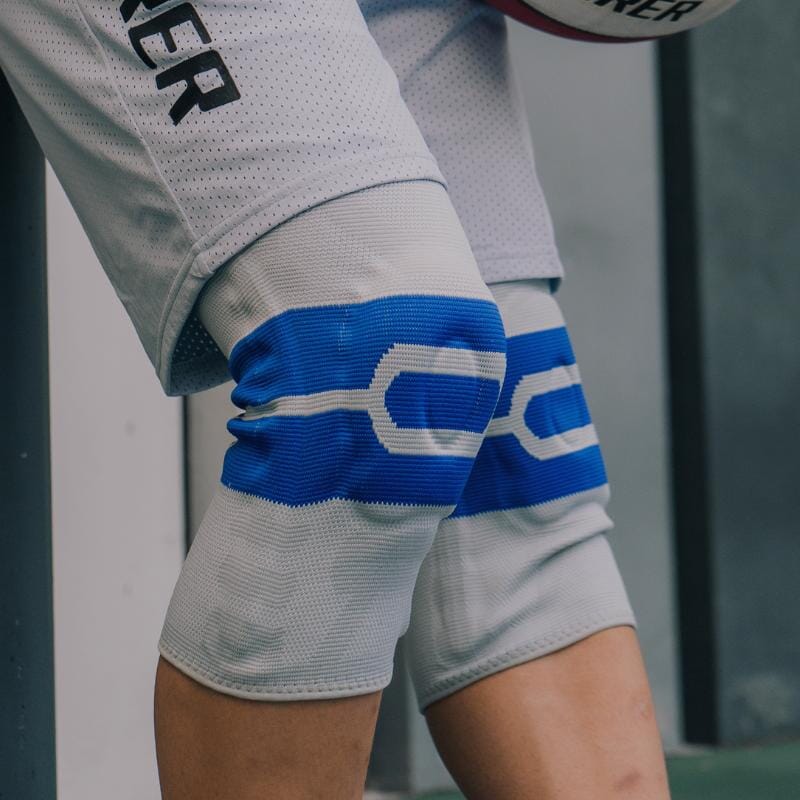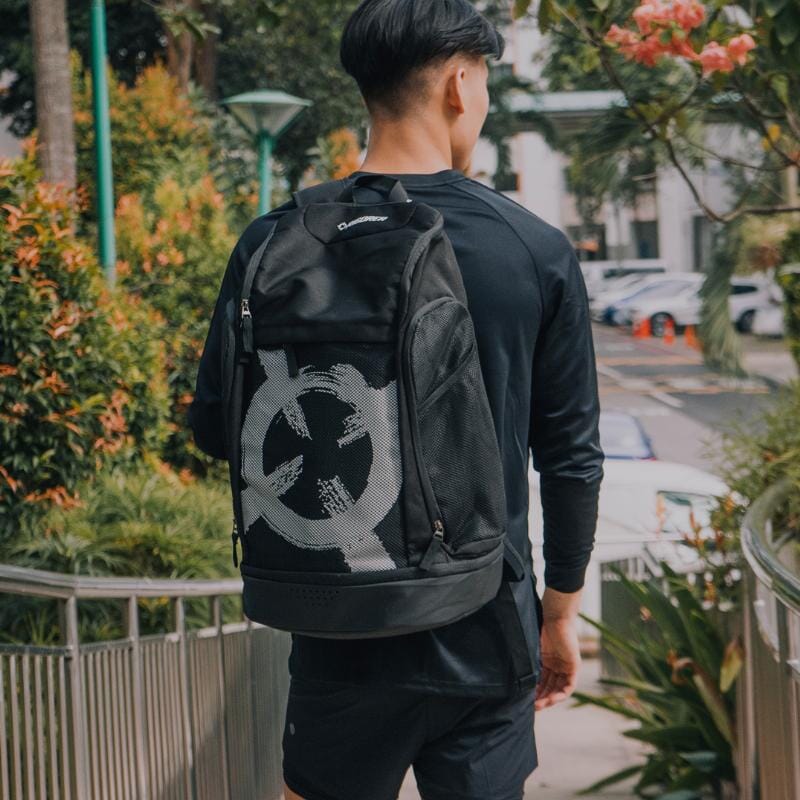Choosing The Right Ankle Support

There are many different types of ankle support available on the market, picking the right one might seem like a daunting task. In this article we will be going through the various different types of ankle support and weighing their pros & cons to hopefully help you better pick the ankle support suited for your lifestyle and needs.
Benefits of wearing an ankle support
First off we will explain the benefits of wearing an ankle support, how they can prevent ankle injuries, and how they help in recovery.
Protecting your ankle during sports.
Using ankle support when performing strenuous activities is highly recommended to help you maintain a healthy ankle and prevent injuries. In most contact sports, (e.g. basketball or volleyball) players usually sport either one of the various types of ankle support. This help to protect their ankle and increase their efficiency as well as longevity.
Recovering from an injury.
Ankle support can also be used to aid your ankle in recuperating from an injury. It could even speed up the healing process. Ankle support can keep the ankle in an optimal recovery position which optimise recovery rate. For example, someone who is suffering from a severely sprained ankle will go for a more appropriate form of ankle support like the ankle brace. This will keep the ligaments and joint in place while they heal. It limits motion, provides protection, and helps reduce pain.
Different types of ankle support
Ankle brace.
The ankle brace is most commonly used by people who are recovering from an injury. They are a popular choice for “demanding physical sports.” They offer maximum protection while still allowing the athlete to remain quick on their feet.
Pros:
-Ankle braces offer maximum protection and keeps the ankle in place. This makes it ideal for sports that involve heavy physical contact that put constant stress on the ankles. (e.g basketball, volleyball etc)
-Ankle braces are a very helpful tool for people recovering from injuries as they help keep the ankle compact and in place to allow the ligaments to heal effectively.
Cons:
-In exchange for high protection, the ankle brace will slightly hinder a person’s flexibility and range of motion which some people may not like.
-Wearing an ankle brace when recovering from an injury might actually cause a few problems when their ankle is fully healed. Because of the rigidity and tightness, there may be increased build-up of scar tissue when the ankle is recovering. Resulting in reduced range of motion in the ankle for a short period after they recover.
Recommended for:
-People who play contact sports that put pressure on their ankles
-People who are recovering from a relatively serious ankle injury
-People who are looking for the maximum protection ankle support on the market
Check out our recommended ankle brace here.
Ankle guard.
The ankle guard is a “jack of all trades” ankle support, it offers protection and absorbs some shock from a person’s ankle while also retaining ankle flexibility and mobility
Pros:
-Ankle guards are commonly in all kinds of non-contact sports (e.g tennis and badminton etc.) It is a strong choice for many athletes because of the protection it offers while still having the advantage of ankle mobility.
-Ankle guard can aid in ankle recovery, although not as rigid as an ankle brace, an ankle guard with straps is a strong alternative because it also keeps the ankle in place while allowing some flexibility to minimize the build-up of scar tissue in the ankle.
Cons:
-Ankle guards do not offer the maximum support. Therefore there is a higher chance of an injury occurring from an awkward landing or a missed step.
-Some people use ankle guards when they are trying to regain strength in their ankle post-injury as it provides ankle support while they ease back into sports, but this carries a risk of an injury reoccurring if they are not careful.
Recommended for:
-People who play sports that require some range of motion and flexibility
-People who want to slowly ease back into sports after an injury
-People who just want some support when playing sports to maintain ankle health
Check out our recommended ankle guards here.
Ankle sleeve.
Ankle sleeves are usually preferred by people who are suffering from long term ankle ailments. (E.g. tendonitis, arthritis etc.) They are usually made of neoprene or knit fabric and are designed to provide a primary level of protection along with compression for better circulation.
Pros:
-Ankle sleeves offer compression to the foot and ankle which promotes blood circulation. This allows more oxygen to be passed through which helps strengthen the ligaments and overall ankle health.
-Ankle sleeves are preferred by people who suffer from longer term injuries like tendonitis because they offer compression which helps to relieve pain and reduce swelling. They also help alleviate pressure on the ankle which in turn prevents inflammation thus greatly benefitting the healing process.
Cons:
-Ankle sleeves mainly offer compression and pressure relief at a primary level of protection, which might not be ideal for sports that are more strenuous.
-For more serious injuries, it might not be ideal for keeping the ankle in place resulting in longer recovery times or even further injury.
Recommended for:
-People suffering from non-ligament related injuries. (e.g endonitis, arthritis, plantar fasciitis)
-People who wish to improve blood circulation in their foot or ankle, improving overall ankle health.
Check out our recommended ankle sleeves here.
Ankle tapes.
Ankle Tapes are commonly used to support joints, especially the ankle joint. The goal is to reduce the risk of re-injury.
Pros:
-Ankle tapes are excellent for supporting the joints and alleviating pressure on the ankle, it is most commonly used in sports that require a great deal sharp changes of movement like soccer and badminton.
-Ankle tapes also help hold a person’s ankle in place when recovering from an injury to allow the ligaments to heal efficiently. It also helps to reduce swelling and pain thus speeding up recovery rate.
Cons:
-Ankle tapes are an effective but rather costly way to support your ankle. For one, ankle tapes are not re-usable and new tape has to be used each time. People with sensitive skin also have to purchase and use foam underwraps to help prevent skin irritation and itchiness.
-Improper technique used when taping your ankle might cause the joint to be positioned awkwardly or too tightly. This could hinder blood circulation to the ankle thus doing more harm than good.
Recommended for:
-People who partake in high intensity or competitive sports.
-People who are recovering from relatively serious injuries. (Usually ligament related)
Checkout our recommended ankle tapes here.
For people with sensitive skin also check out our foam underwraps here.
So what ankle support is right for me?
Take your daily needs into consideration, are you someone who enjoys high intensity sports? Or play them competitively? If you fall into this category, take the safer route and go for the maximum protection and ankle longevity that an ankle brace or ankle tape offers.
If you are active but do not like to partake in contact and high intensity sports, go for an ankle guard as it is a more casual option but still keeps your ankles in good shape. It is a perfect choice for people who just want to keep fit and maintain an active lifestyle.
People who just want to enjoy good ankle and foot health, you can opt for the ankle sleeve which promotes blood flow and increases circulation therefore allowing your ankles to remain strong and healthy for a longer time.
Protect your ankles, keep them healthy. Your ankles will thank you for it!







Leave a comment